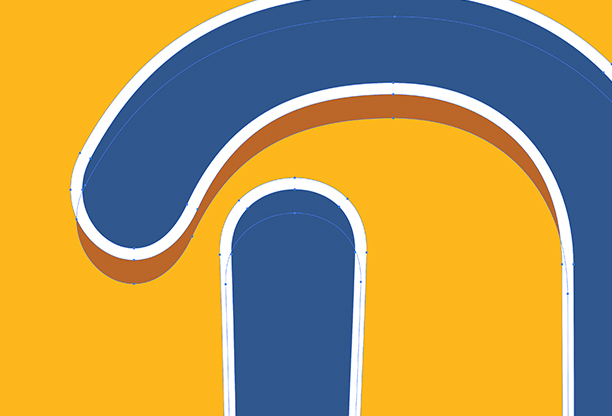When working with billboard sized graphics here are a few things you need to know to get the highest quality print.
Perhaps you are a large organization with your own branding/marketing team and understand the process quite well, or you are a small company who has only outsource your your design work or don’t know where to begin. This is where we can help!
Often times we see companies left only a website based logo design or art files flattened in the proof sent to them by other graphic designers. It might get you by on your business card printing service for a file size of 2″ x 3.5″ but branding your fleet is somewhere between 312″ up to 636″! Unlike stationary billboards mounted 30 feet in the air and 300 ft away from the highway, your ‘brandportation’ can sit 6 feet from an audience in traffic. Let’s ensure you make the right impression with sharp images and clean text!
Once we receive your files we will inspect them for quality and let you know if they will work for your project. If you can’t reach the original designer to make the necessary modifications we provide design services. Our talented staff can recreate your files or get you started on the appropriate re-brand with a proper style guide for your company identity.

RASTER OR PIXELATED FILES
These Filetypes are Reserved for Photography (JPG, TIFF, GIF, PNG, PSD)
Must be 150-300 DPI at 100% Scale or doubled per scale increase (ex. 1/4th scale 4 x 300 DPI = 1200 DPI)
Original Photography file included with Layout Design File
Pixelated Files can look jagged or blurry
Large File Sizes
Color Mode RGB for Screens
VECTOR OR ILLUSTRATION FILES
These Filetypes are Optimal for logos (EPS, SVG, PDF, AI, CDR)
Mathematical Point System Scales with clarity
Works best with most Printers and Cutters
Easy to Edit
Smaller File Sizes
Color Mode CMYK for

HOW COLORS LOOK IN YOUR FILES ON THE SCREEN VS HOW THEY PRINT
If you have a specified color in your branding we are going to request a physical sample to color match or ask for your PMS (Pantone Matching System) Color to ensure the closest match. Here is where the science comes in!


FAQ
Q: Can I convert my .jpg to an .eps and submit it as a vector file?
A: No. Changing a files extension does not change the artworks’ properties. It must be created or drawn as a vector to be a true vector file.
Q: Can I convert a photograph to a vector illustration?
A: Yes, but it will still create color separations between each pixel and will look like millions of blobs of colors instead of squares. It helps to an extent for scaling up images but it is still preferred to start with a image that is high in megapixels.
Q: My designer gave me a vector file of my logo but when enlarged the letters are wavy. Why?
A: Rookie Move! The designer did not take the time to re-draw the artwork. They used a feature in Illustrator called “image trace”. This is a great tool for converting hand drawings to illustrator paths but not so great for reading text in a .JPG or raster file. It will follow the contour of the pixels and create distortion in the text. It’s always good to know the names of the fonts used in your branding and use the original typeface when creating new files!
Q: I have files of my logo that I can’t open or preview, are those important?
A: YES! Those are probably .PSD or .AI files. Sometimes you also can’t open .EPS if you do not own the appropriate design program or Adobe software. There are some online file preview options out there, but most likely those are the files we need for the highest quality! They are also key in making any changes to your artwork.
Q: The files I have will not attach to an email because they exceed the maximum file size for an attachment. Is there an easier way to get the files to Allvan?
A: Yes! We have a file storage link here! https://app.box.com/f/e1071b6ce2394bcda4c3b76c9493227e
Q: My truck body is painted, can you make the wrap match the paint color?
A: Yes and No. As long as we have the body or paint color in front of us to test we can get as close of a match as we can. However, a wrap will not be as saturated as paint because ink is tiny transparent droplets laid over white media. You will see a difference. Also, paint is premixed pigment. Printing is a 4 color process to a create color. Its difficult to create primary colors or white tinted pigments. Its the same issue you will run into trying to use CMYK to create Pantone specific ink colors. It falls outside the CMYK gamut.
Q: I submitted the recommended file types. Why am I quoted a design fee when I have a logo?
A: The appropriate design file is just the first step! We have to modify your design files to properly work in our printer software. This may include color separations, knock-outs, and/or offset paths. This also includes the color proofing process and making sure the right conversions are created for each printer’s calibrations. Something that can’t be determined by a designer that is not in-house to your printer.

